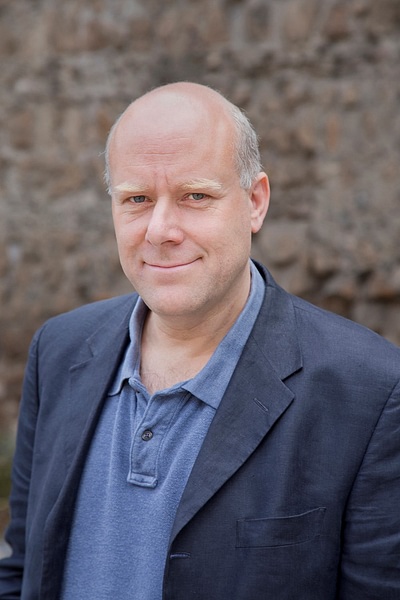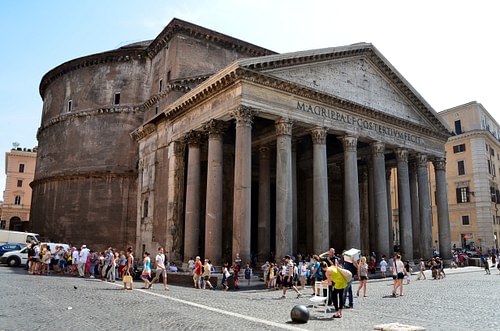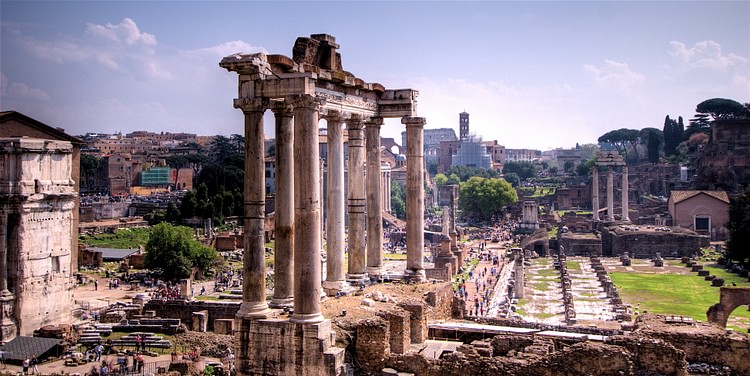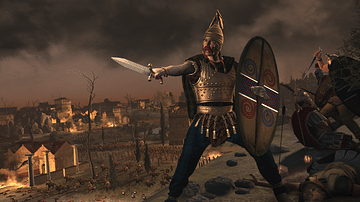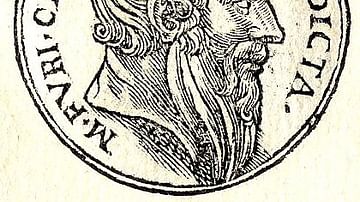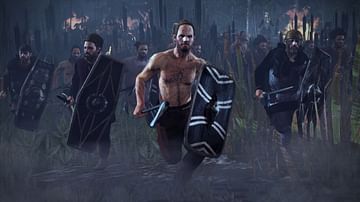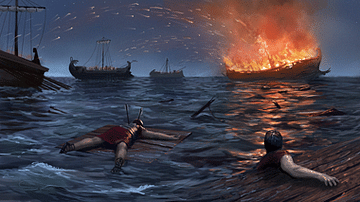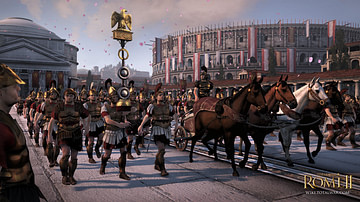No city on earth has preserved its past quite like Rome. Visitors stand on bridges that were crossed by Julius Caesar and Cicero, walk around temples visited by Roman emperors, and step into churches that have hardly changed since popes celebrated mass in them 16 centuries ago. These architectural survivals are all the more remarkable considering the violent disasters that have struck the city. In this exclusive interview, Ancient History Encyclopedia's James Blake Wiener quizzes Matthew Kneale, author of Rome: A History in Seven Sackings, on the fierce courage, panache, and vitality of the Roman people across space and time.
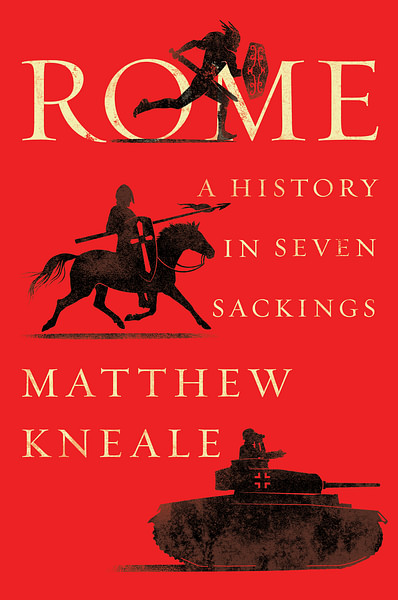
JBW: Matthew Kneale, why did you choose to write a book about Rome's history, which is framed through the lens of military sieges? What are the advantages and disadvantages of this episodic approach to social and cultural history in your opinion?
MK: I have been fascinated by Rome since I first saw it, aged eight. 16 years I came to live in the city, and I was soon drawn to the idea of writing a book on its history - all of it. The trouble was there was so much. Rome's past is not only immensely long but, when compared to anywhere else, it is extremely well recorded. I came up with the idea of focusing on a handful of moments. Sackings were the obvious choice as they were dramatic in themselves and they transformed Rome, sending it in new directions. Seven hills, seven sackings. The format would also allow me to introduce some social history, by producing seven snapshot portraits of the city before it was attacked: what it looked like and smelled like, and how Romans lived their lives.
The city has changed so much over time that I would effectively be describing seven different cities, each of which would have been largely unrecognizable to Romans of other eras. I was aware that this approach had its limitations. Most of all, I would not be able to cover those periods when Rome was secure and was not attacked. The greatest omission would be the centuries between the Gauls' attack in 387 BCE and the Visigothic sacking of 410 CE, a period when Rome grew from a republican city-state to an imperial superpower. Yet I found I could fill in these gaps, if briefly, by using a literary device.
Each time I described Rome before it was attacked, I would imagine how it would have appeared to a kind of time-traveling visitor from the previous era I had examined. By describing changes he or she would have observed - what was new, what was lost - I could recount what had happened to Rome during the intervening centuries, without getting too bogged down in detail. I wanted the overall approach to be a little like a join-the-dots puzzle, and I hoped that by setting seven dramatic moments one after the other I would give the reader a clear outline of Rome's astonishing evolution: its rise, its calamitous decline, and its struggles to rise again.
JBW: In researching and writing your new title, has your impression of Rome and its inhabitants changed? If so, in which ways, and why?
MK: I have certainly got to know Rome a lot better. I feel I better understand how its many architectural layers fit together, from the classical and medieval, and from the baroque to the fascist. I also feel I understand the Romans a great deal better, and I have some clues as to how they have been shaped by their past. They have seen good times and terrible times. They know that, with patience, both will eventually pass. They live in one of the most beautiful urban landscapes on earth. Romans are cautious, sometimes opportunistic, but they can also be tough and resourceful. And they are a warm people. Somehow from its troubled past, Rome has emerged as a remarkably friendly capital, where it can seem like everyone knows everyone else by their first name.
JBW: Which siege would you say transformed Rome the most, physically and culturally?
MK: I would say Rome was most changed by Gothic Wars in the mid-6th century. It was Rome's worst low point. In a brutal conflict that lasted two decades, the city endured a year-long siege not once but twice, it changed hands several times, it suffered grave destruction - the district of Trastevere was burned to the ground - and for a brief period, it appears to have been wholly abandoned.
During this same era, old institutions and traditions from consuls to chariot races slowly vanished away. The Senate, whose real power had faded centuries earlier, was the last to go. The Pope, who took the title of Pontifex Maximus (chief priest) that had been used by Western Roman Emperors, became the city's ruler. His highest clergy wore silk slippers, which had been a privilege of Rome's senators. It was at this time that classical Rome became transformed to medieval, papal Rome.
JBW: Of the many historical figures that appear in Rome: A History in Seven Sackings, which one intrigued or surprised you the most?
MK: It is hard not to be intrigued by the Norman leader, Robert Guiscard, whose forces took Rome in 1084 CE. Immensely tall, he was medieval Europe's ultimate, self-made man. Born the sixth son of the lord of an obscure village in Normandy, Robert followed other Normans seeking opportunities in southern Italy. He soon found them. Through advantageous marriages, skill in battle, and through his own cunning (Guiscard was French for weasel) Robert rose to become a duke and ruler of most of southern Italy. The most dangerous man in the Mediterranean, he defeated the forces of popes, of Arab Sicily, of Venice, and of both the Holy Roman and the Byzantine Empires.
He came to Rome in 1084 CE to rescue an unlikely ally, the purist Pope Gregory VII, who by this time was so loathed by the Romans that he could not be choosy about his friends. Ruthlessly aggressive though Robert Guiscard could be, his assault on Rome was one of the less destructive the city experienced. While other attacks on Rome involved months or years of waiting outside the walls in the hope that the Romans would surrender or turn traitor and let them inside (as often happened), Guiscard's assault was rapid and efficient. After only four days camped outside Rome, his forces entered the city by stealth, scaling its walls at dawn. They burned a few strong points that might threaten their retreat - all churches - and rescued the Pope in an attack that appears to have lasted only a matter of hours. Compared to the calamitous attacks of more recent and enlightened times, it seems like the clinical strike of a special operations unit.
JBW: While reading Rome: A History in Seven Sackings, I was continually struck by how dexterous the Romans are in handling so many calamities and disasters across time and space. What is it about the Roman character that allows them to be so versatile and still shrewd in the face of surmounting obstacles and prolonged chaos?
MK: Though one might not think it from their driving, Romans are a patient people. Patience is a seen as a virtue and is much respected. Romans are also flexible. If one approach does not work, they will patiently try another. Though rules are more widely respected than one might think, Romans will allow them to be bent a little if that allows for a satisfactory resolution of a problem. Finally, for all their complaints and world-weariness, Romans are immensely proud of their city.
One can find references to this same pride centuries and millennia ago. Ever since Rome first became a great power, more than 2,000 years ago, Romans have felt their home was remarkable and special. During the many trials they have had to undergo since then, this patience and self-belief, along with a resilience and a toughness, have carried them through.
JBW: What lessons from history do you believe that Rome (or the Romans) can teach those of us living in post-modern cities today?
MK: I would say that the lessons Rome offers us are not especially surprising, yet they are all too often forgotten, as recent catastrophic events in our cities - the disastrous flooding in Houston is one that comes to mind - have shown with distressing clarity. To thrive, cities, of course, need money, but they also need good government and intelligent regulations. Classical Rome had some very poor regulations on street size. Roads were required to be narrow, causing residential areas to become warrens of narrow lanes. Fire was a constant danger, and the city suffered regular disastrous conflagrations.
Yet in other respects, classical Rome functioned remarkably well. Its rulers built no fewer than eleven aqueducts, enough to keep its huge population - estimated at around 1.5 million - constantly supplied with fresh water. An efficient system of drains took away its waste. A dozen huge bath complexes and many hundreds of small ones kept Romans clean. Fleets of ships sailing from every corner of the Mediterranean kept them fed. Vast theatres, stadiums, and amphitheaters, including the Circus Maximus chariot circuit and Colosseum, provided them with entertainment, however unsavory it may be to our eyes. Gardens and fora gave them open places where they could take a walk, meet one another, and shop. After the city was devastated by repeated sackings most of these facilities were lost.
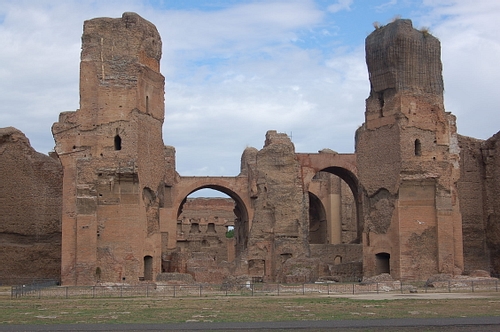
By the 11th century CE, long abandoned baths had been transformed into prestigious housing, and the Colosseum was the city's largest residential block. Rome's comforts reached a low point, rather surprisingly, during the Renaissance, an era we associate with clear thinking and progress. By then its population was greater than it had been for a thousand years, yet most of its residents lived in the chaos of medieval non-planning. Houses encroached on winding alleys, drains no longer worked, and of the city's original eleven aqueducts only one still functioned, producing only a dribble of water. Romans drank from the Tiber, which was also the city's main drain and its morgue (astonishingly many claimed to like its taste).
Improvement came to the city largely thanks to religious failure. After the papacy suffered the Protestant Reformation and lost a large portion of its European believers, popes remade Rome as a showcase of Catholicism. Money poured in from Catholic states, notably Spain, which at this time was rich with silver and gold from the Americas. New planning and regulations were introduced. Drains and aqueducts were repaired or remade, fountains created, streets were widened and cleaned up, new palaces and churches were built. The city became more pleasant to live in than it had been at any time in its long past. The Rome that we think of today was largely created at this time.
JBW: Thank you so much for sharing your thoughts with Ancient History Encyclopedia's users and readers! I wish you many happy adventures in research and in Rome.
MK: Thank you, James!
Matthew Kneale was born in London, UK, in 1960, the son and grandson of writers. He studied Modern History at Magdalen College, Oxford. Fascinated with diverse cultures, he travelled to more than 80 countries and tried his hand at learning a number of foreign languages, including Japanese, Ethiopian Amharic, Romanian, and Albanian. He has written five novels, including English Passengers, which was shortlisted for the Booker Prize and won the Whitbread Book of the Year Award. His latest was a non-fiction history book, Rome: A History in Seven Sackings. For the last 15 years, he has lived in Rome with his wife and two children.
